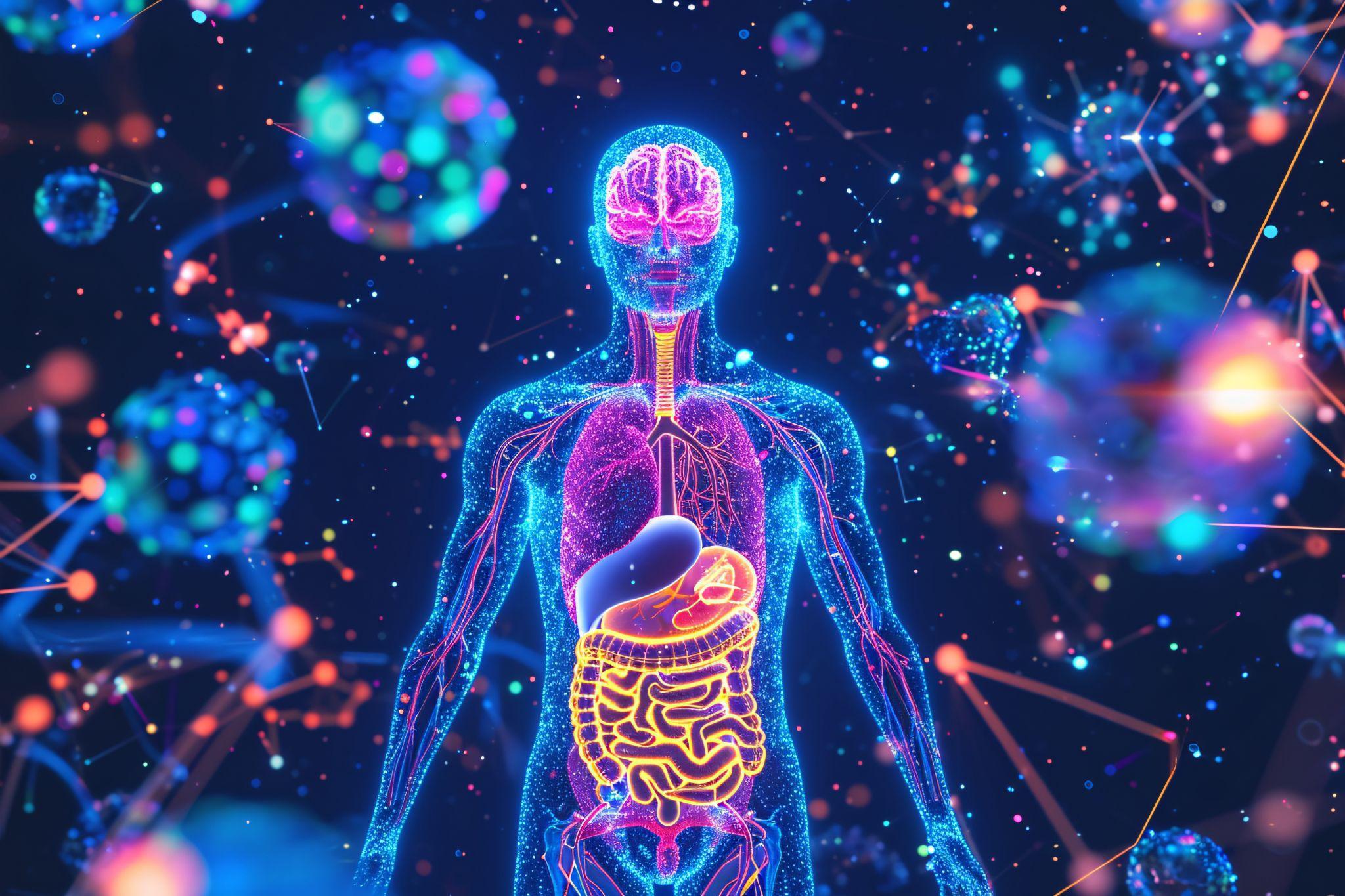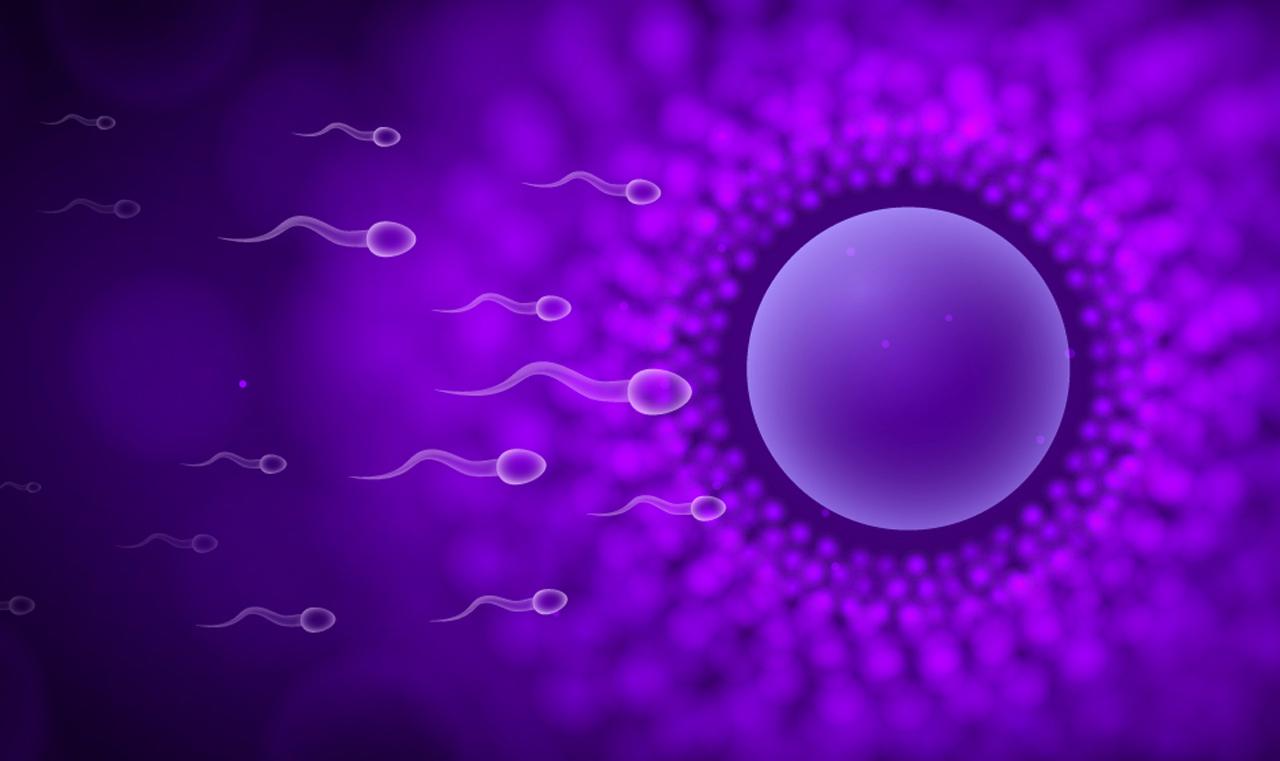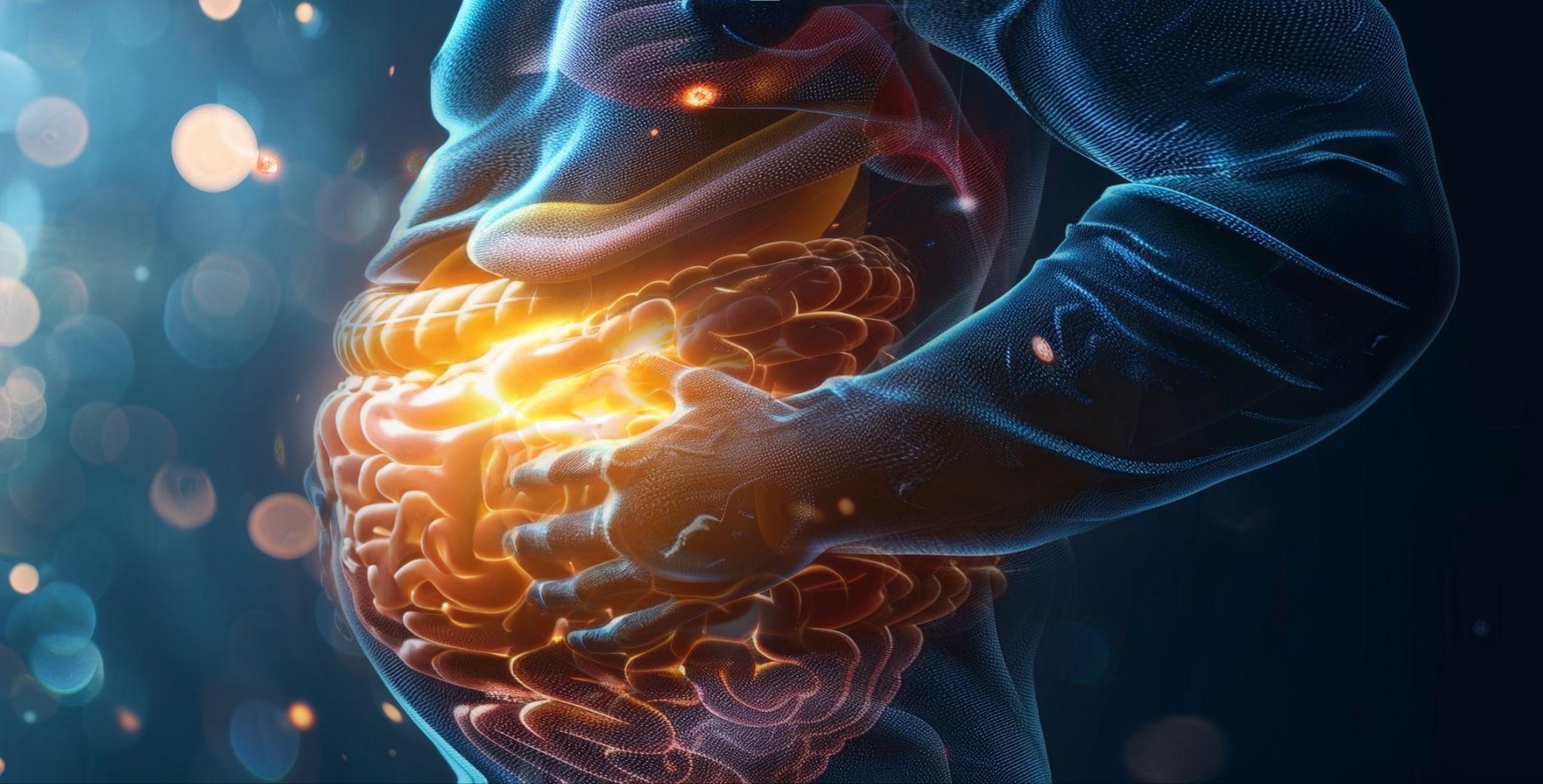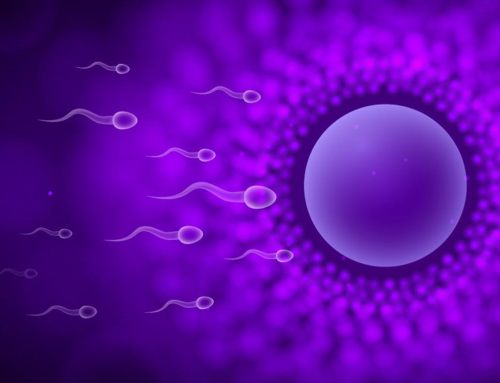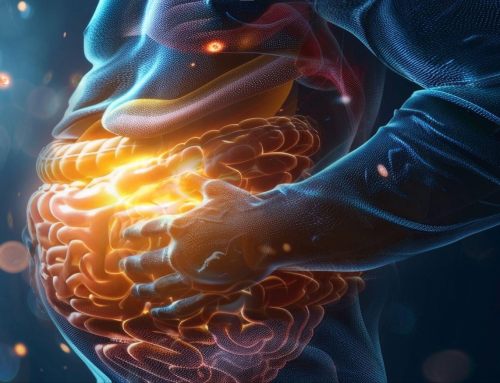How Does Aging Impact the Endocrine System?
Aging is a biological process in which there is a progressive loss of physiological functions in the body, from cells to tissues and organs. Aging has significant effects on countless body systems. Notably, aging is associated with various alterations in the endocrine system (1). As this system has a bidirectional effect on the regulation of aging through the modulation of hormone levels in the body, hormonal balance is key to health and longevity.
Complexity & Synchronicity of the Endocrine System
The Endocrine System is an intricate and complex network of organs and glands responsible for secreting various hormones (2). Hormones serve as biochemical messengers in the body, circulating throughout the bloodstream to reach targeted tissues and cells. They support homeostasis by modulating metabolism, reproduction, growth, libido, mood, and the stress response. The endocrine system comprises the hypothalamus, pituitary, thyroid, parathyroid and adrenal glands, pancreas, ovaries (females), and testes (males). Obtaining balance in this system is integral to health and longevity.
Dysregulation of the endocrine system can result in compromised metabolic, musculoskeletal, neurodegenerative, immune, and GI health conditions, underscoring its vast effects. Balance in the endocrine system, therefore, is significant for optimal functioning of processes in the body that govern homeostasis, well-being, and aging.
Age-Related Alterations in the Endocrine System
Profound changes in the complex and intricate functions of the endocrine system have been observed with age. Hormone production and modulation declines naturally with age, often resulting in imbalances and dysfunction in the system—further contributing to the aging process. Reductions in sex hormones are observed throughout the lifespan with regard to aging. This is significant as these hormones exert a number of influences on the body and mind. Estrogen and testosterone have targeted effects on diverse tissues and organ systems in the body through specific pathways, which can either accelerate or slow the aging process.
The risk of developing endocrine disorders, including diabetes and thyroid dysfunction, also increases with age. Endocrine disorders may result in alterations in cardiovascular health in response to these changes in homeostasis.
In addition to physiological and pathological processes, aging is also the result of psychological and environmental factors, including chronic stress and environmental toxins. This is important to be mindful of, as the endocrine system may be more susceptible to these insults. While there are marked reductions in sex hormones among men and women as they age, stress hormones like cortisol and insulin increase, whereas thyroid problems often become more prevalent, all leading to a decline in energy, function, and vitality (3).
Crosstalk Among The Thyroid-Adrenal Axis
Estrogen, progesterone, and testosterone intricately influence thyroid and adrenal health – playing pivotal roles in balancing the endocrine system. The thyroid-adrenal axis is imperative for modulating metabolism and stress. The thyroid and adrenal glands support modulation of hormone levels, as well as the body’s response to stress. This information is relayed via the thyroid-adrenal axis, comprising the hypothalamic-pituitary-adrenal (HPA) and hypothalamic-pituitary-thyroid (HPT) axes. These systems work in conjunction to modulate metabolism, hormonal balance, and the stress response (5).
The thyroid gland governs metabolism by releasing thyroid hormones. Aging may affect thyroid function as thyroid hormone production often decreases with age, resulting in alterations in metabolic rate, energy levels, and weight. Adrenal function may also become compromised with age, affecting the synthesis of hormones that have integral roles in the stress response. Prolonged stress can also result in adrenal fatigue as the body needs to make more cortisol to keep up with physiological demands (6). High levels of cortisol can interfere with the thyroid gland’s ability to work efficiently.
Metabolic–Endocrine Implications
In addition to regulating the production of energy, hormones also modulate energy utilization, storage, and distribution in the body. These metabolic functions become compromised with age leading to alterations in glucose metabolism and insulin sensitivity, which may lead to the development of insulin resistance, type 2 diabetes, cardiovascular disease, and metabolic syndrome. Thyroid disorders including hypothyroidism (associated with fatigue, weight gain, and depression) and hyperthyroidism (associated with weight loss, anxiety, and palpitations) may also result from age due to inefficiency of the endocrine glands. This underscores the need to address diet exercise, stress, and sleep for hormonal balance.
Immune-Endocrine Influence
The immune system becomes less efficient, and therefore more prone to dysfunction with age. This can increase the likelihood of developing autoimmune conditions where the body attacks its own endocrine glands resulting in Hashimoto’s thyroiditis, a cause of hypothyroidism, and Graves’ disease, a cause of hyperthyroidism (7).
Sex hormones, including estrogens, androgens, and progesterone have profound effects on immune function. Alterations in these concentrations that occur in aging impact immune responses and the etiology of immune-related conditions (8).
Reductions in Sex Hormones, Alterations in Subsequent Hormones
Estrogen, testosterone, progesterone, and DHEA have been shown to decline with age. Depleted levels of these hormones may manifest as an array of symptoms including reduced libido, fatigue, gradual loss in skeletal muscle and bone mass, reduced protein synthesis, hot flashes, increased risk of cardiovascular disease among women (due to reductions in estrogen), altered body composition, changes in mood, and insulin resistance. This illustrates the vast interconnectedness hormones have with nearly all our body’s systems and their extensive impact on vitality.
In particular, a dramatic decrease in estrogen levels in menopause often leads to reductions in bone mineral density. Men begin experiencing a decline in free testosterone at a rate of 1-2% each year beginning at age 30. Women also experience reductions in bioavailable testosterone with age (4). Loss of estrogen and testosterone reduces defenses against oxidative stress. Increased ROS, therefore, may also impair endocrine system functioning. ROS greatly impedes the production and survival of osteoclasts, osteoblasts, and osteocytes, resulting in negative implications for bone health density.
Testosterone has been considered a biomarker of health in men and women (9). Depleted testosterone weakens the immune system, leading to weight gain and mood alterations. Changes in the secretion of integral hormones including testosterone, estrogen progesterone, insulin, growth hormone, and thyroid hormones have been observed in aging.
Profound reductions in growth hormone (GH) have also been evident. GH secretion has been suggested to decrease by 15% every decade, beginning at the age of 30 (1). GH has been demonstrated to improve bone density, muscle strength, fat metabolism, skin thickness, and sexual function.
Reduced receptor sensitivity to hormones has also been suggested to occur with age, affecting the body’s response to hormonal signals.
Male-Specific Induced Changes – The role of hormonal changes relative to men’s health include notable reductions in testosterone, as well as alterations in estrogen, thyroid hormones, insulin, and cortisol. In males, testosterone levels gradually decline with age, beginning around the age of 30. Andropause is a recently recognized term in the literature to characterize reductions of testosterone in men, including symptoms of feeling less focused, motivated, or energetic, low libido, and compromised sexual function, such as erectile dysfunction (10). Reduced muscle mass, increased body fat, and changes in overall mood may also be evident.
The development of chronic metabolic health conditions – such as obesity, insulin resistance, and type 2 diabetes – may also be more likely due to these induced changes. Men may experience elevated levels of estrogen as this hormone is produced in fat tissue as insulin levels go up, in part due to thyroid changes. A growing body of research shows lower testosterone levels in patients with the metabolic syndrome (11).
From age 40, total testosterone levels have shown to gradually decline at a rate of about 1% per year. Beginning in their 50s, testicular function in males has been demonstrated to decrease by 1-2% every year (12). Alterations in prostate function may also be evidenced in aging males which can affect urinary and sexual function. Declining testosterone levels can also contribute to reduced bone density, increasing the risk of fractures and osteoporosis.
Depleted Testosterone – Adverse effects on sperm quality, quantity, sexual organs, and the hypothalamic-pituitary-gonadal axis have been observed relative to aging in males. Hormone production, spermatogenesis, and testes undergo profound changes as males age. These changes lead to decreases in both the quality and quantity of sperm (13). Aging causes oxidative stress due to the accumulation of ROS in cells over time. Oxidative stress in spermatozoal mitochondria induces lipid peroxidation and further ROS generation. Excessive amounts of ROS and decreased antioxidant capacity in the course of aging may also induce apoptosis or oxidative damage to DNA (14).
Female-Specific Induced Changes – Hormones are related to the functioning of nearly all our cells’ metabolism, impacting energy, mood, immunity, fertility, libido, and more. Hormone production and fertility begin to decline at age 30 in women. Levels begin to further decrease in perimenopause – the transition into menopause. Typically between the ages of 45 and 55 women enter menopause, marked by cessation of ovarian function and a decline in estrogen and progesterone production. The most notable symptoms include hot flashes, vaginal dryness, and changes in mood and libido.
Estrogen decline during menopause also contributes to decreased bone density, increasing the risk of osteoporosis and fractures in older women. The uterus may also undergo atrophy after menopause, leading to changes in size and function (15).
The beneficial effects of estrogen impact several other tissues, including the heart, arteries, central nervous system, fat, and liver, and improved defenses against ROS. Thus, postmenopausal women have an increased risk of cardiovascular disease due to age-related hormonal changes. Decline may lead to adverse changes in lipid profiles and blood pressure, increasing risk for cardiovascular disease.
Estrogen’s protective effects on the cardiovascular system are particularly important in relation to its role in nitric oxide (NO) production (an essential cell signaling molecule known for its role as a vasodilator) that increases blood flow and circulation. Estrogen induces NO production, having important roles in oxygen and nutrient delivery to cells, promoting cellular renewal and vitality, and therefore having implications in the aging process.
Oxidative stress, inflammation, and cardiovascular disease have all been associated with menopause, as well as a decline in healthy NO levels. Research suggests that alterations in estrogen levels also cause disruptions in producing antioxidant enzymes, which can result in increased oxidative stress. Estrogen modulates antioxidant enzymes important for the generation of oxygen, including NADH/NADPH oxidases, which also play a role in endothelial function.
Reductions in hormone production and regulation can affect various endocrine glands, and influence thyroid and adrenal functions, further compounding overall balance.
The Role of Nitric Oxide in Governing Homeostasis
Both males and females are affected by diminished levels of nitric oxide due to hormonal changes with age. This is important as NO has various implications for our health. In regards to the nervous system, NO modulates its functions by regulating the release of other neurotransmitters significant for mood, such as GABA. NO also impacts neuroplasticity and neurogenesis, supporting mood and cognition.
Nitric Oxide is also deeply involved in the brain’s immune system and neuroinflammatory response. NO regulates blood flow to the brain, impacting how much oxygen and nutrition gets delivered. NO can also influence the release of hormones from the hypothalamus and pituitary gland, playing an integral role in neuroendocrine regulation. Diet, microbiome support, and breath work increase NO production and blood flow to the brain, also supporting nervous system health (16).
Support Equilibrium with Nutrition & Lifestyle
Taking a root cause approach to hormonal imbalances that occur with age includes looking at the interconnections with the gut microbiome, diet, lifestyle, environment, toxins, stress, and sleep.
Microbiome Relevance, The Epicenter – The gut microbiome has significant importance in aging and in hormone regulation. Metagenomic studies show that it harbors 3.3 million unique genes (17). It has also been demonstrated that more than 30 hormone genes are expressed in the GI tract (18). Therefore, alterations in the gut microbiome can lead to hormonal dysfunction, and affect aging and longevity. This further underscores the role of the gut in promoting health, balance, and vitality – as well as the epigenetic implications of nourishing it.
The conditions of the microbiome are important for efficient NO synthesis. Adequate stomach acid and healthy, diverse microbiota in the oral and GI microbiome are all important for adequate NO synthesis. The gut also synthesizes important neurotransmitters important for mood and vitamins such as Vitamin K2 significant for supporting bone density. It is also a key player in metabolic and immune health.
Emerging research also demonstrates bidirectional communication or crosstalk between the gut microbiota and the ovaries further underscoring the role of gut microbiota in anti-aging interventions (19). Further findings from a 2024 study indicate that males with erectile dysfunction exhibit different microbial phenotypes than healthy controls. ED participants had lower microbial diversity and increased levels of IL-6, indicative of inflammation (20).
In light of these findings, adding an array of cultured foods to one’s diet including kimchi, yogurt, miso, or sauerkraut may be beneficial, as well as natural sources of digestive enzymes such as bromelain from pineapple.
Balanced Nutrition for Balanced Hormones – Adhering to a balanced, nutrient-dense, whole-food diet with quality proteins, anti-inflammatory fats, and adequate amounts of fiber supports hormonal balance and healthy aging. This pattern of eating also prevents blood sugar spikes which is imperative in maintaining endocrine balance. Refraining from refined and processed carbohydrates, additives, and sugars is also important.
- Ensuring high-quality nutrition with calcium, magnesium, Vitamin D, and Vitamin K is essential for supporting bone density. Collard greens, sardines, leafy greens, salmon, and almonds are some great choices.
- Sources of zinc, such as oysters, are especially important to include as they support testosterone production (21). A 2023 review demonstrated the hormone-regulating properties of zinc. Supplementation with zinc was shown to improve testosterone levels (22). Zinc also activates hormonal, neurotransmitter, and signaling pathways in the gut.
- Eating to support mitochondria health with leafy greens and an array of antioxidants from fruits and vegetables is also important in combating aging and its effects on the endocrine system.
- Adding rich sources of Vitamin C, including oranges, peppers, and fresh strawberries, can help in supporting adrenal function.
- Foods to support thyroid function and balance include seaweed, brazil nuts, berries, and modest amounts of cruciferous vegetables.
- Ensuring adequate hydration with filtered water is also recommended to support efficient detoxification of toxins.
Movement, Sleep, and Minimizing Stress – Movement is significant for endocrine balance. Resistance training supports production of testosterone, promoting balance in the body and mind. Obtaining sufficient sleep is imperative for healthy aging while supporting the endocrine system. Sleep is foundational for homeostasis amongst all of the body’s systems, with vital restorative properties for the body and mind. Research also highlights the interrelationship between circadian rhythm and endocrine system balance, further underscoring the need to prioritize healthy sleep-wake patterns (23).
Reducing stress is also valuable, as high levels can impede endocrine function and wreak havoc on many of the processes in the body that contribute to aging. GH production is also regulated in response to lifestyle factors including stress, nutrition, exercise, and sleep, further underscoring the role epigenetics plays in aging. (24). Breathing meditations may be beneficial as they can promote PNS dominance and improve HRV and NO production. Finally, minimizing exposure to environmental toxins is imperative.
Takeaways for Optimal Health & Vitality
The endocrine system can be significantly altered and impacted by aging, affecting various physiological homeostatic functions that govern our health. However, it can also be incredibly supported. Understanding the biological processes underlying and associated with aging from this perspective supports enriched clinical treatment protocols for improved health, vitality, and longevity.
Join us on May 21st, from 5-7 pm PST, for this free, thought-provoking virtual event: The Endocrine Symphony – Evaluating and Supporting the Organs of Communication with speakers Jeff Bland, PhD, Michael Chapman, ND, and Dr. Christian Jenski.
You’ll gain an in-depth clinical understanding of navigating this endocrine maze while unraveling dysfunctions in this system to yield more efficient treatment outcomes for patients, based on novel functional medicine protocols.
References:
- López-Otín C, Blasco MA, Partridge L, Serrano M, Kroemer G. The hallmarks of aging. 2013 Jun 6;153(6):1194-217. doi: 10.1016/j.cell.2013.05.039. PMID: 23746838; PMCID: PMC3836174.
- Hiller-Sturmhöfel S, Bartke A. The endocrine system: an overview. Alcohol Health Res World. 1998;22(3):153-64. PMID: 15706790; PMCID: PMC6761896.
- van den Beld AW, Kaufman JM, Zillikens MC, Lamberts SWJ, Egan JM, van der Lely AJ. The physiology of endocrine systems with ageing. Lancet Diabetes Endocrinol. 2018 Aug;6(8):647-658. doi: 10.1016/S2213-8587(18)30026-3. Epub 2018 Jul 17. PMID: 30017799; PMCID: PMC6089223.
- Pataky MW, Young WF, Nair KS. Hormonal and Metabolic Changes of Aging and the Influence of Lifestyle Modifications. Mayo Clin Proc. 2021 Mar;96(3):788-814. doi: 10.1016/j.mayocp.2020.07.033. PMID: 33673927; PMCID: PMC8020896.
- Helmreich DL, Parfitt DB, Lu XY, Akil H, Watson SJ. Relation between the hypothalamic-pituitary-thyroid (HPT) axis and the hypothalamic-pituitary-adrenal (HPA) axis during repeated stress. Neuroendocrinology. 2005;81(3):183-92. doi: 10.1159/000087001. Epub 2005 Jul 11. PMID: 16020927.
- James L. Wilson, Clinical perspective on stress, cortisol and adrenal fatigue, Advances in Integrative Medicine, Volume 1, Issue 2, 2014, Pages 93-96,ISSN 2212-9588,
- Pokhrel B, Bhusal K. Graves Disease. [Updated 2023 Jun 20]. In: StatPearls [Internet]. Treasure Island (FL): StatPearls Publishing; 2024 Jan-
- Hoffmann JP, Liu JA, Seddu K, Klein SL. Sex hormone signaling and regulation of immune function. Immunity. 2023 Nov 14;56(11):2472-2491. doi: 10.1016/j.immuni.2023.10.008. PMID: 37967530.
- Mederos MA, Bernie AM, Scovell JM, Ramasamy R. Can Serum Testosterone Be Used as a Marker of Overall Health? Rev Urol. 2015;17(4):226-30. PMID: 26839520; PMCID: PMC4735669.
- Martelli M, Zingaretti L, Salvio G, Bracci M, Santarelli L. Influence of Work on Andropause and Menopause: A Systematic Review. Int J Environ Res Public Health. 2021 Sep 25;18(19):10074. doi: 10.3390/ijerph181910074. PMID: 34639376; PMCID: PMC8508409.
- Kawano, H. The relationship between testosterone and metabolic syndrome. Hypertens Res 33, 537–538 (2010). https://doi.org/10.1038/hr.2010.52
- Krakowsky Y, Grober ED. Testosterone Deficiency – Establishing A Biochemical Diagnosis. EJIFCC. 2015 Mar 10;26(2):105-13. PMID: 27683486; PMCID: PMC4975356.
- Gunes S, Hekim GN, Arslan MA, Asci R. Effects of aging on the male reproductive system. J Assist Reprod Genet. 2016 Apr;33(4):441-54. doi: 10.1007/s10815-016-0663-y. Epub 2016 Feb 11. PMID: 26867640; PMCID: PMC4818633
- Barone B, Napolitano L, Abate M, Cirillo L, Reccia P, Passaro F, Turco C, Morra S, Mastrangelo F, Scarpato A, Amicuzi U, Morgera V, Romano L, Calace FP, Pandolfo SD, De Luca L, Aveta A, Sicignano E, Trivellato M, Spena G, D’Alterio C, Fusco GM, Vitale R, Arcaniolo D, Crocetto F. The Role of Testosterone in the Elderly: What Do We Know? Int J Mol Sci. 2022 Mar 24;23(7):3535. doi: 10.3390/ijms23073535. PMID: 35408895; PMCID: PMC8998588.
- Zhou S, Zhao L, Yi T, Wei Y, Zhao X. Menopause-induced uterine epithelium atrophy results from arachidonic acid/prostaglandin E2 axis inhibition-mediated autophagic cell death. Sci Rep. 2016 Aug 10;6:31408. doi: 10.1038/srep31408. Erratum in: Sci Rep. 2020 Apr 20;10(1):6915. PMID: 27506466; PMCID: PMC4979008.
- Luo Y, Zhu Y, Basang W, Wang X, Li C, Zhou X. Roles of Nitric Oxide in the Regulation of Reproduction: A Review. Front Endocrinol (Lausanne). 2021 Nov 19;12:752410. doi: 10.3389/fendo.2021.752410. PMID: 34867795; PMCID: PMC8640491.
- Zhu B, Wang X, Li L. Human gut microbiome: the second genome of human body. Protein Cel 2010 Aug;1(8):718-25. doi: 10.1007/s13238-010-0093-z. Epub 2010 Aug 28. PMID: 21203913; PMCID: PMC4875195.
- Rehfeld, J.F. (2016). The Endocrine Gut. In: Belfiore, A., LeRoith, D. (eds) Principles of Endocrinology and Hormone Action. Springer, Cham. https://doi.org/10.1007/978-3-319-27318-1_19-1
- Huang F, Cao Y, Liang J, Tang R, Wu S, Zhang P, Chen R. The influence of the gut microbiome on ovarian aging. Gut Microbes. 2024 Jan-Dec;16(1):2295394. doi: 10.1080/19490976.2023.2295394. Epub 2024 Jan 3. PMID: 38170622; PMCID: PMC10766396.
- Qiao Y, Chen J, Jiang Y, Zhang Z, Wang H, Liu T, Yang Z, Fu G, Chen Y. Gut microbiota composition may be an indicator of erectile dysfunction. Microb Biotechnol. 2024 Jan;17(1):e14403. doi: 10.1111/1751-7915.14403. Epub 2024 Jan 16. PMID: 38226944; PMCID: PMC10832513.
- Te L, Liu J, Ma J, Wang S. Correlation between serum zinc and testosterone: A systematic review. J Trace Elem Med Biol. 2023 Mar;76:127124. doi: 10.1016/j.jtemb.2022.127124. Epub 2022 Dec 23. PMID: 36577241.
- Miyoshi M, Tsujimura A, Miyoshi Y, Uesaka Y, Nozaki T, Shirai M, Kiuchi H, Kobayashi K, Horie S. Low serum zinc concentration is associated with low serum testosterone but not erectile function. Int J Urol. 2023 Apr;30(4):395-400. doi: 10.1111/iju.15138. Epub 2023 Jan 3. PMID: 36594398.
- Gnocchi D, Bruscalupi G. Circadian Rhythms and Hormonal Homeostasis: Pathophysiological Implications. Biology (Basel). 2017 Feb 4;6(1):10. doi: 10.3390/biology6010010. PMID: 28165421; PMCID: PMC5372003.
- Brinkman JE, Tariq MA, Leavitt L, et al. Physiology, Growth Hormone. [Updated 2023 May 1]. In: StatPearls [Internet]. Treasure Island (FL): StatPearls Publishing; 2024 Jan-. Available from: https://www.ncbi.nlm.nih.gov/books/NBK482141/
